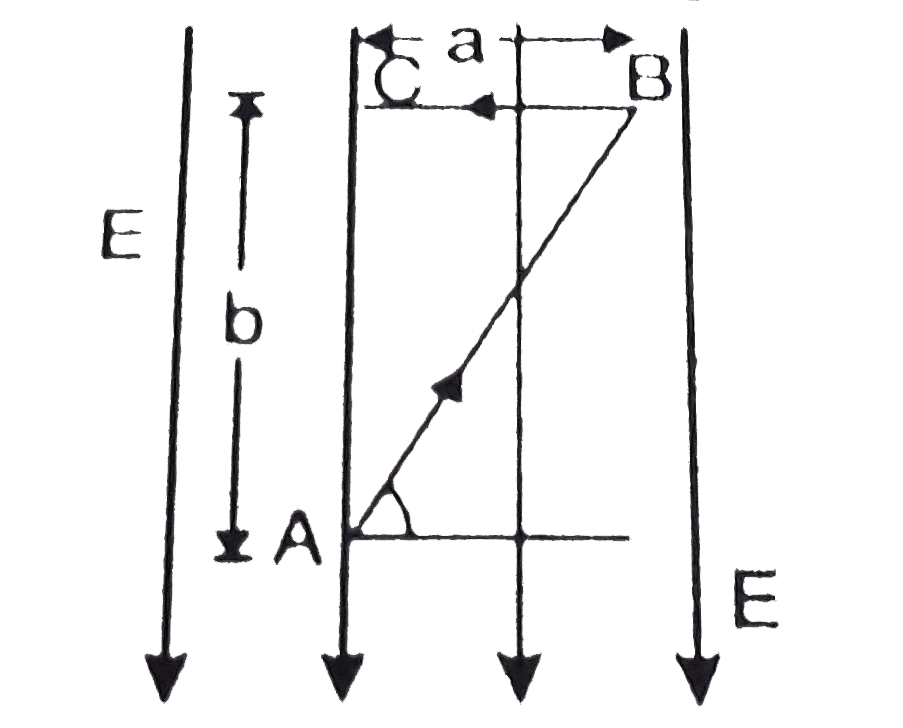STATEMENT-1 : Absolute value of potential is not defined.
STATEMENT-2 : For a given potential function, electric intensity function can be uniquely found.
STATEMENT- 3 : Potential increases in the direction of electric field
F F T
T T F
T F T
F T F
The correct Answer is:B
To analyze the statements provided in the question, we will evaluate each statement one by one and determine their truthfulness.
Step 1: Evaluate Statement 1
Statement 1: Absolute value of potential is not defined.
- Explanation: The electric potential at a point is defined relative to another point. We can only measure the potential difference between two points, not the absolute potential at a single point. The reference point is often taken as infinity, where the potential is defined to be zero. Therefore, the absolute value of potential is indeed not defined.
- Conclusion: This statement is True.
Step 2: Evaluate Statement 2
Statement 2: For a given potential function, the electric intensity function can be uniquely found.
- Explanation: The electric field intensity (E) can be derived from the electric potential (V) using the relation E=−∇V (in three dimensions) or E=−dVdx (in one dimension). This means that for any given potential function, we can find a corresponding electric field intensity function uniquely.
- Conclusion: This statement is True.
Step 3: Evaluate Statement 3
Statement 3: Potential increases in the direction of electric field.
- Explanation: The electric field points in the direction of decreasing potential. When a positive test charge moves in the direction of the electric field, it moves from a region of higher potential to a region of lower potential. Therefore, the potential does not increase in the direction of the electric field; it decreases.
- Conclusion: This statement is False.
Final Summary
- Statement 1: True
- Statement 2: True
- Statement 3: False
The overall truth values of the statements can be summarized as:
- Statement 1: True
- Statement 2: True
- Statement 3: False
Thus, the answer to the question is TTF (True, True, False).
---
Statement 1: Absolute value of potential is not defined.
- Conclusion: This statement is True.
Statement 2: For a given potential function, the electric intensity function can be uniquely found.
Statement 3: Potential increases in the direction of electric field.
- Statement 1: True
- Statement 2: True
- Statement 3: False
- Statement 1: True
- Statement 2: True
- Statement 3: False
Topper's Solved these Questions
- ELECTROSTATIC POTENTIAL AND CAPACITANCE BOOK - AAKASH INSTITUTE ENGLISHCHAPTER - ELECTROSTATIC POTENTIAL AND CAPACITANCE EXERCISE - SECTION-I Subjective Type Questions
6 Videos
- ELECTROSTATIC POTENTIAL AND CAPACITANCE BOOK - AAKASH INSTITUTE ENGLISHCHAPTER - ELECTROSTATIC POTENTIAL AND CAPACITANCE EXERCISE - SECTION-J Aakash Challengers Questions
5 Videos
- ELECTROSTATIC POTENTIAL AND CAPACITANCE BOOK - AAKASH INSTITUTE ENGLISHCHAPTER - ELECTROSTATIC POTENTIAL AND CAPACITANCE EXERCISE - SECTION-G(INTEGER ANSWER TYPE QUESTIONS)
9 Videos
- ELECTROMAGNETIC WAVESBOOK - AAKASH INSTITUTE ENGLISHCHAPTER - ELECTROMAGNETIC WAVESEXERCISE - ASSIGNMENT SECTION - D Assertion-Reason Type Questions
25 Videos
- GRAVITATION BOOK - AAKASH INSTITUTE ENGLISHCHAPTER - GRAVITATION EXERCISE - ASSIGNMENT SECTION - D (ASSERTION-REASON TYPE QUESTIONS)
15 Videos
Similar Questions
In the following question a statement of assertion (A) is followed by a statement of reason (R )
A: For a given potential function, electric intensity function can be uniquely derived.
R : For a given electric intensity function, electric potential function can be uniquely derived.
View SolutionThe potential difference points a and B in the given uniform electric field is :

View Solution
Knowledge Check
Electric field inside a conductor can be zero only, if potential inside the conductor is
AIf both assertion and reason are ture and reason is the correct explanation of assertion.BIf both assertin and reason are ture but reason is not the correct explanation of assertion .CIf assertion is true but reason is false.DIf both assertion and reason are false.
STATEMENT-1 : At a point electrostatic field is zero, then potential at that point may be zero .
and
STATEMENT-2 : Negative of the potential gradient is equal to electrostatic field.
View SolutionSTATEMENT -1 : No two electric field line can intersect each other.
and
STATEMENT-2 : At point of intersection electric fieldmust be zero.
View SolutionSTATEMENT-1 : If a charge particle enters into a uniform electric field, then its path must be straight line.
and
STATEMENT -2 : Electrostatic force on a positive charge particle is always in the direction of electric field.
View SolutionIn the following question a statement of assertion (A) is followed by a statement of reason (R )
A : An equipotential surface is normal to electric field lines.
R : Potential increases in direction of electric field .
View SolutionSTATEMENT-1: We cannot add the electrode potential in order to get electrode potential of third electrode if no. of moles of electrons exchanged are not same.
STATEMENT-2: Electrode potential is an extensive property
View SolutionSTATEMENT-1: As we move across a resistor in the direction of current, current decreases,
and
STATEMENT-2 : As we move across a resistor in the direction of current , potential decreases.
View SolutionThe electrical potential function for an electrical field directed parallel to the x-axis is shown in the given graph.
 Draw the graph of electric field strength.
Draw the graph of electric field strength.
View Solution